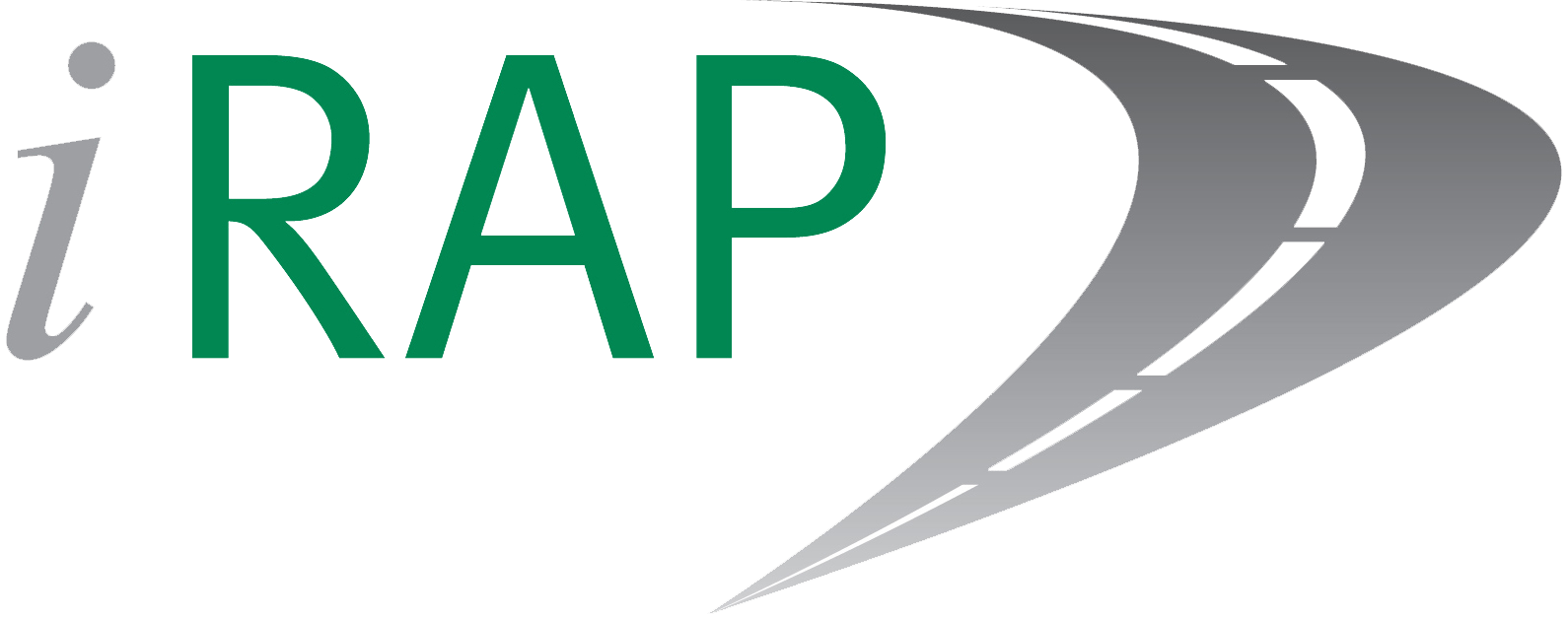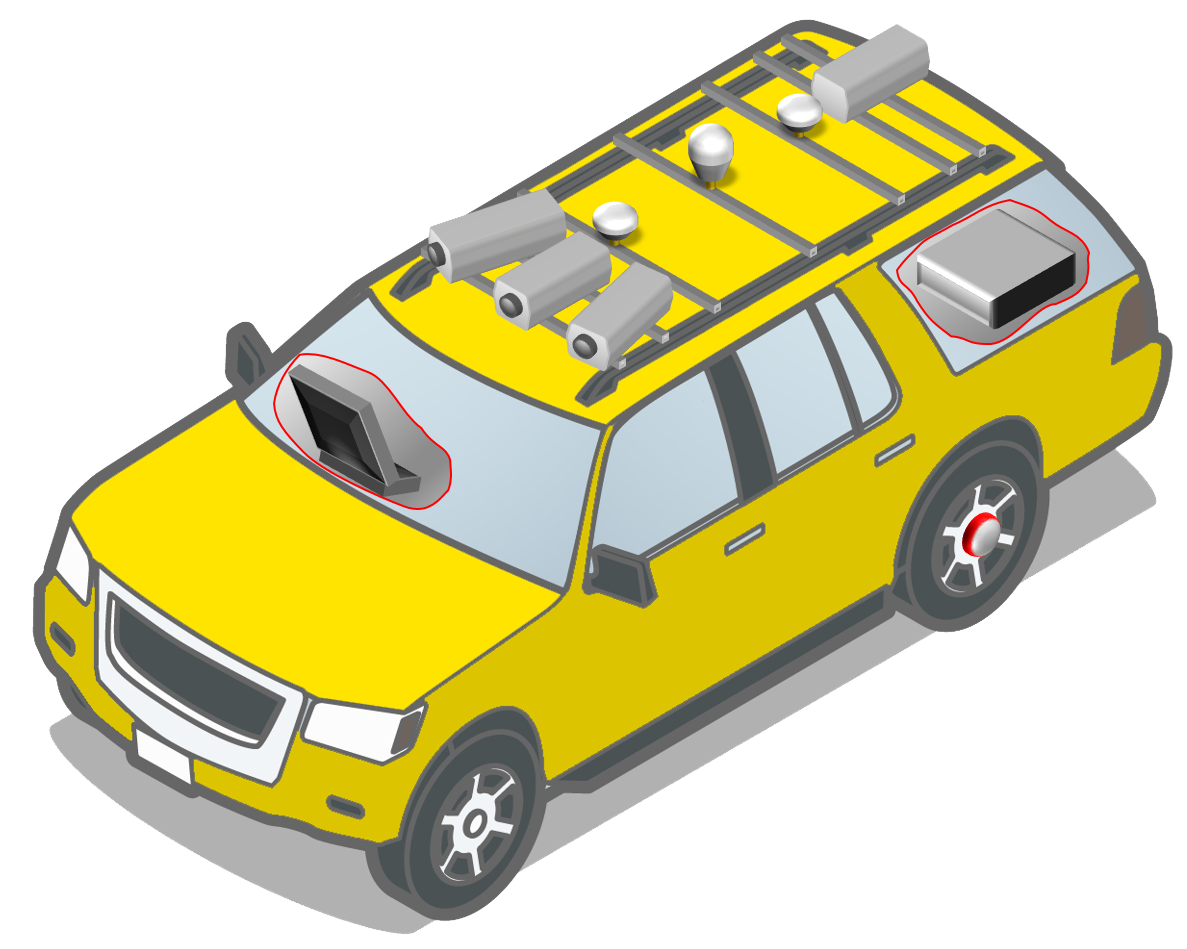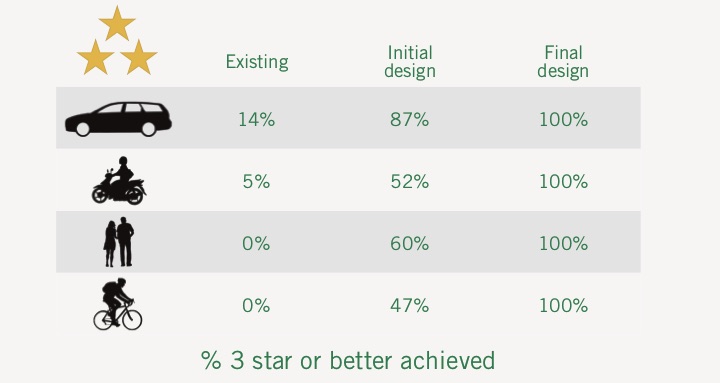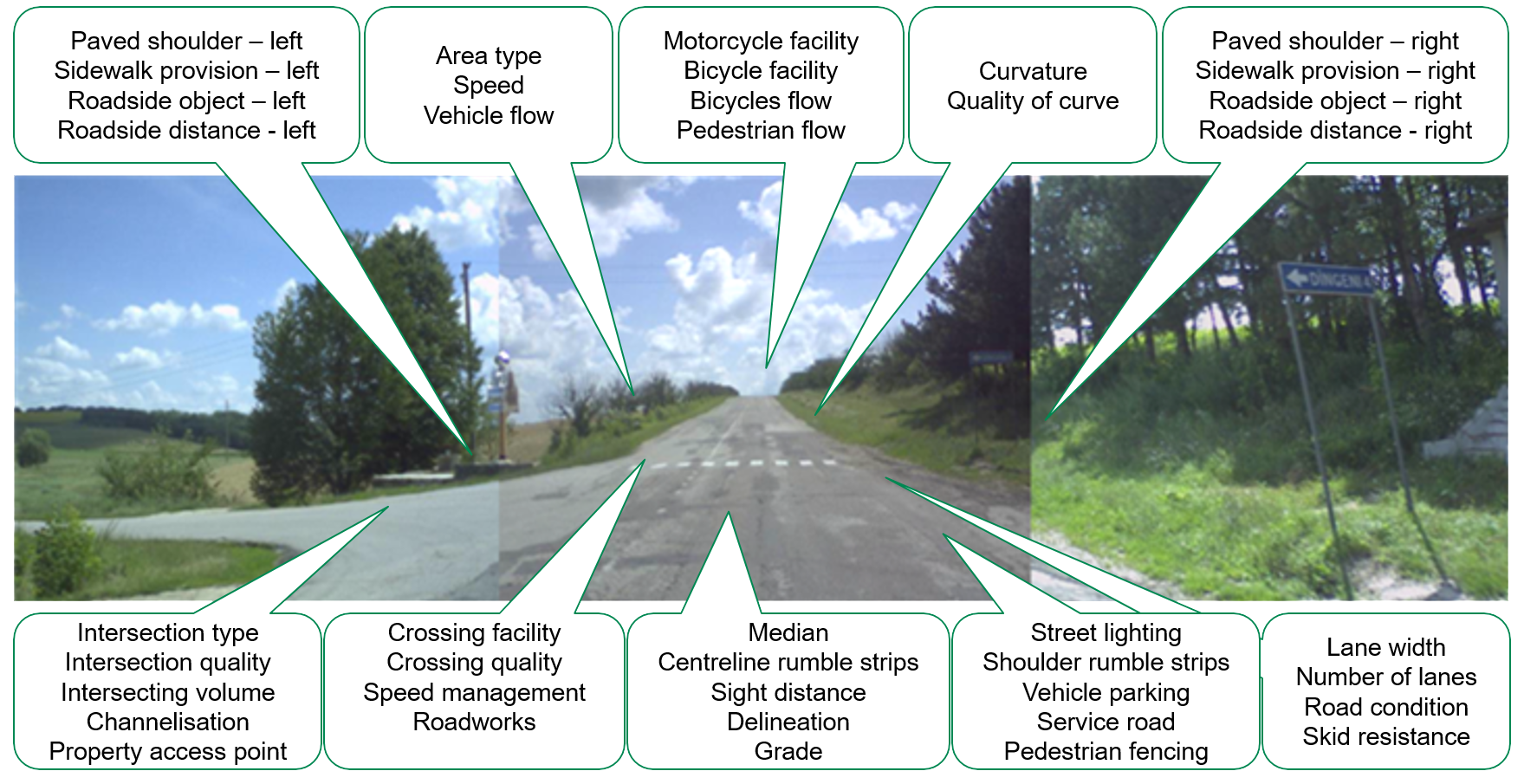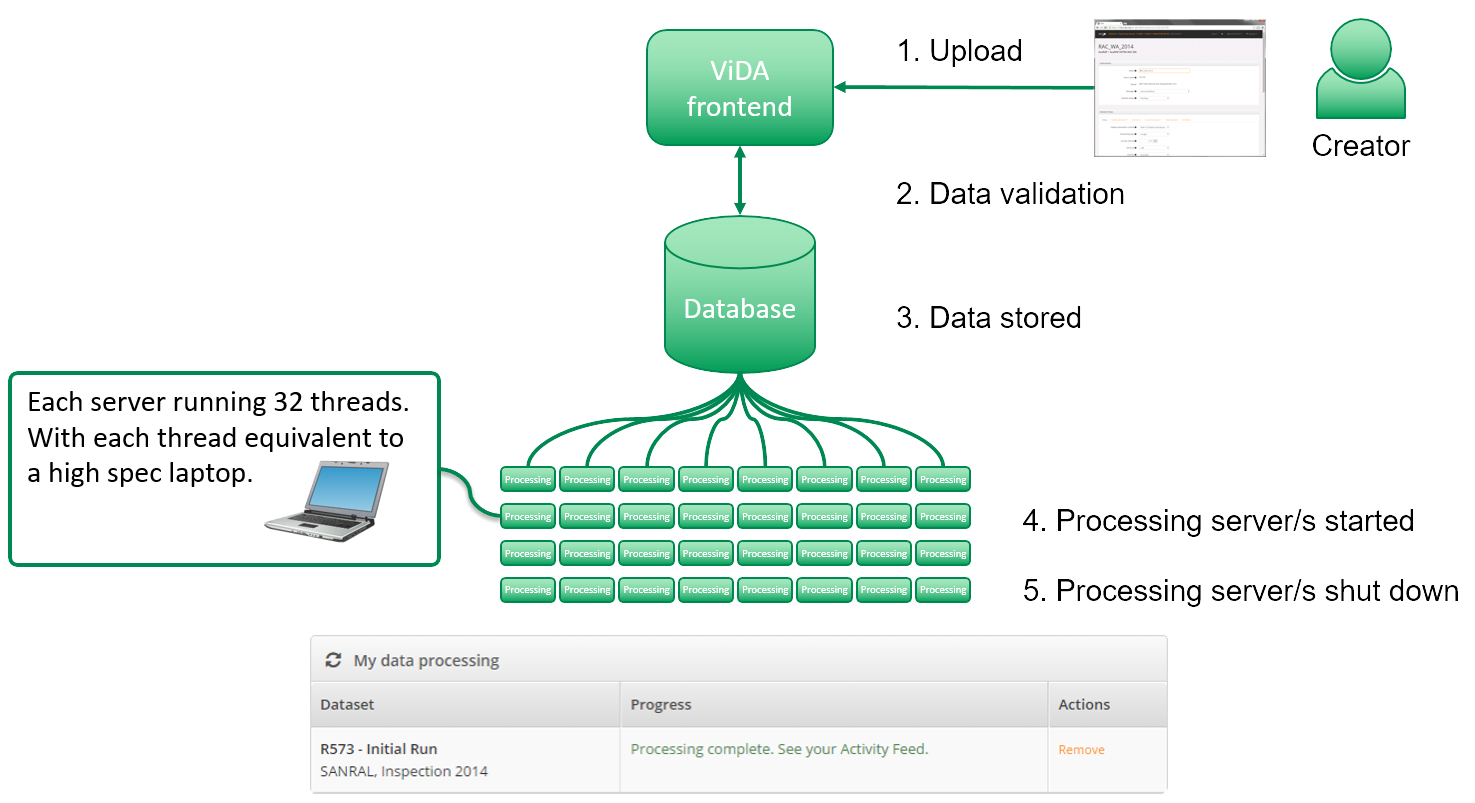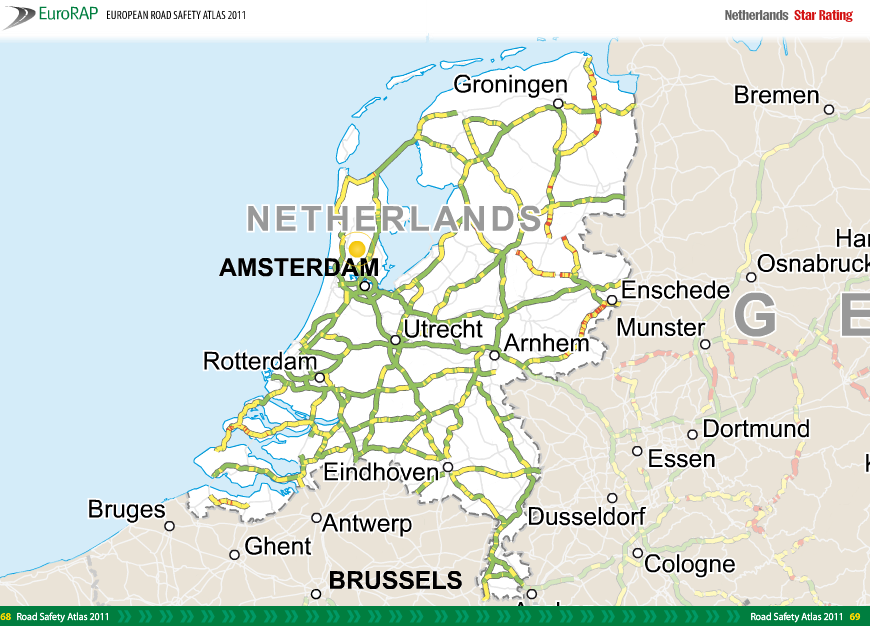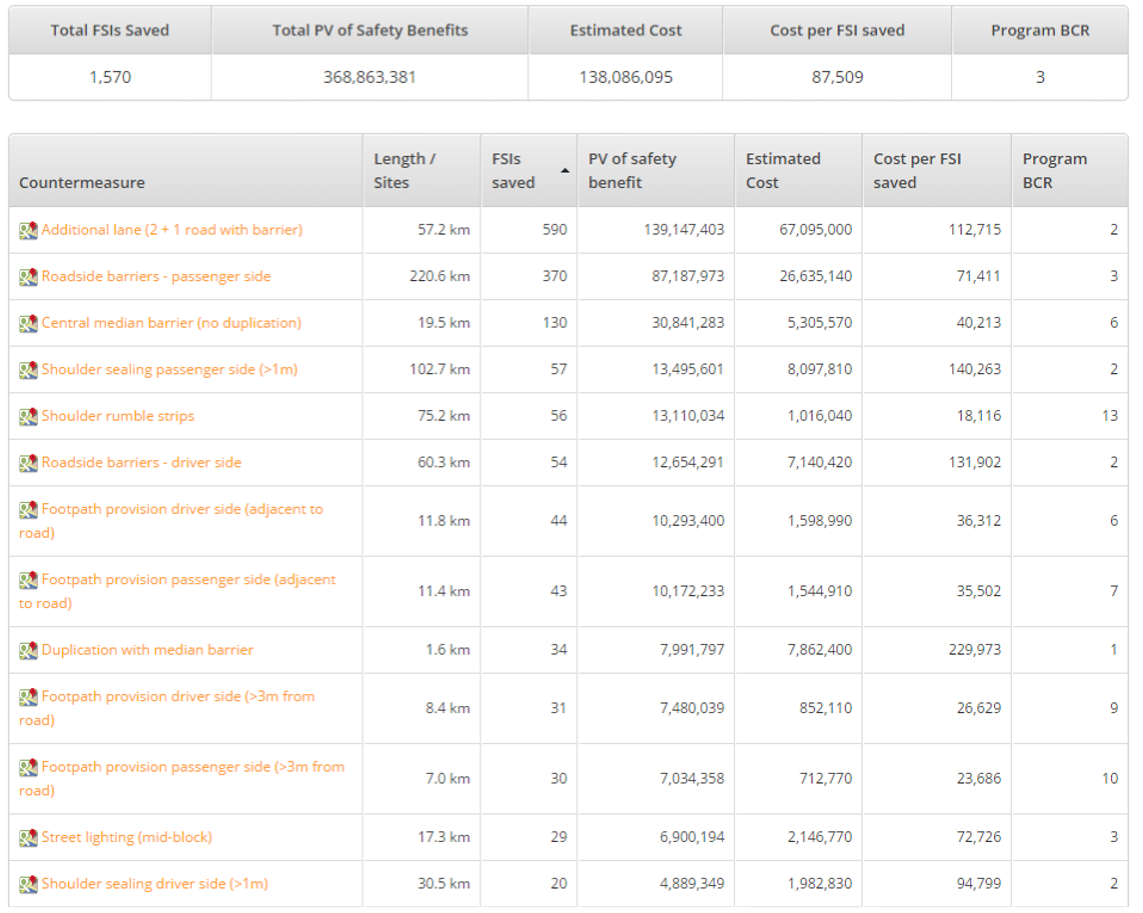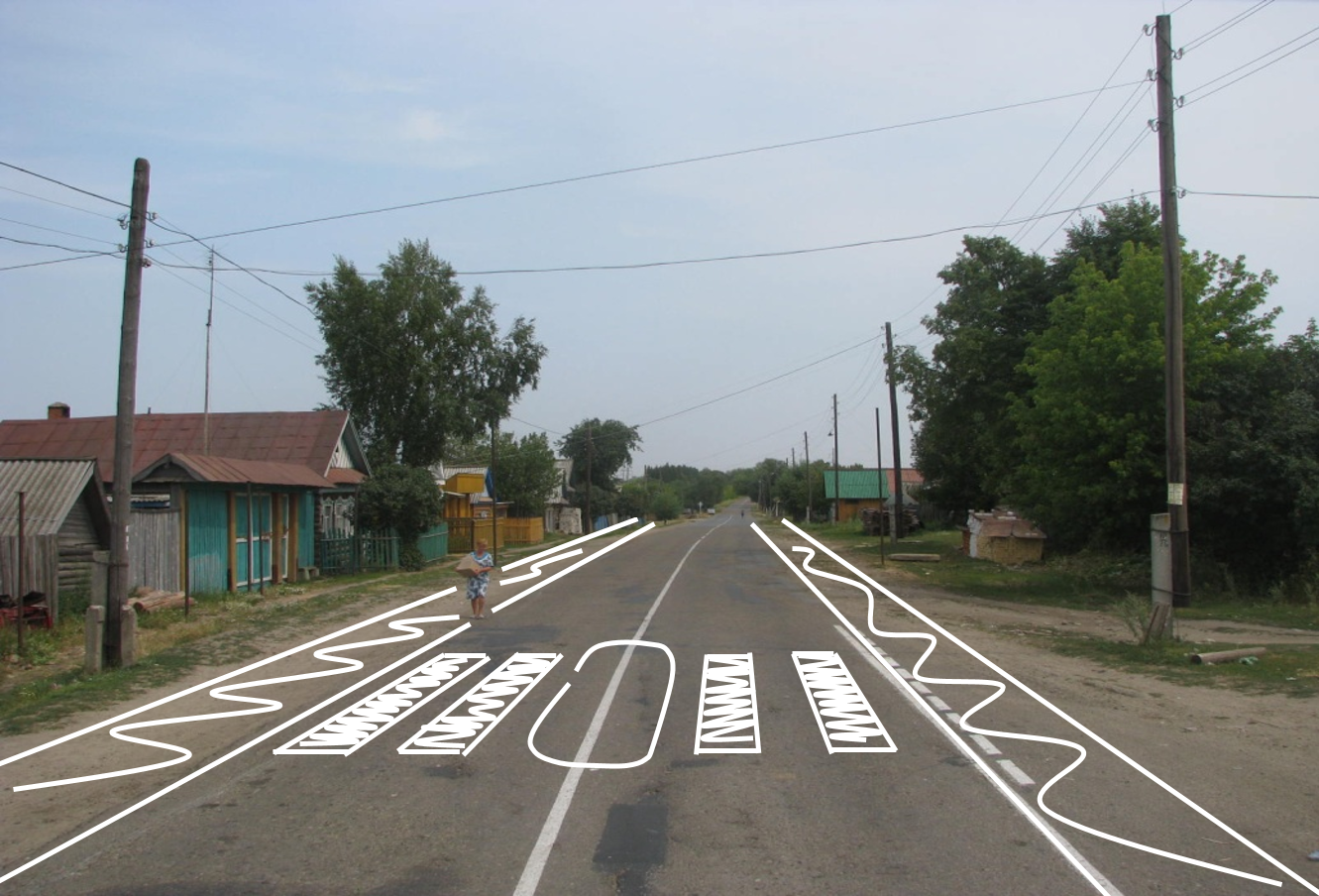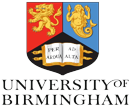
Premiado por sus esfuerzos en América Latina
iRAP fue reconocido por sus contribuciones a la seguridad vial en la ceremonia anual de Premios Americanos de la Región IV de la FIA.
El Director Regional de iRAP, Julio Urzua, fue reconocido por la FIA por su trabajo en la creación e implementación de iniciativas de seguridad vial para el año 2012, reafirmando los compromisos de los clubes de automovilismo de fortalecer la sinergia entre la movilidad y el transporte.
Hasta fines de 2012, se habían llevado a cabo evaluaciones de iRAP en Argentina, Belice, Brasil, Chile, Colombia, Costa Rica, El Salvador, Guatemala, Honduras, México, Nicaragua, Panamá y Paraguay.
2013 iRAP report – India overview (Phase 2)
Download Click the file icon above to download the file. 2013 iRAP report – India overview (Phase 2)2013 iRAP paper – Relationship between Star Ratings and crash cost: Bruce Highway, Australia
Download Click the file icon above to download the file. 2013 iRAP paper – Relationship between Star Ratings and crash costs: Bruce Highway, AustraliaKSHIP and World Bank joint winners of Star Performer award
The 2012 iRAP Asia Pacific Star Performer award recognizes action by the Karnataka State Highway Improvement Program (KSHIP) and the World Bank to ensure that safety is built-in to designs for new roads and major upgrades, prior to construction.
The winners of the 2012 award were announced during the recent Global Road Safety Partnership (GRSP) Asia Seminar and International Road Assessment Programme (iRAP) Workshop in Manila, and a special ceremony will also be held during a Global Road Safety Facility engineering workshop in Bangalore in June.
Karnataka was the first jurisdiction in the region to commit to setting minimum Star Ratings for new road designs.
The commitment is consistent with the Commission for Global Road Safety recommendation that desired design speeds for new roads should be subject to achieving minimum safety ratings.
The steps taken to date include:
- The World Bank initially set a target of three-stars for road safety demonstration corridors included in a loan package. The Government then extended this target to include more than 500km of annuity roads.
- Road safety inspections were carried out and baseline Star Ratings calculated for the existing roads.
- Detailed supporting data, including road crash investigation data, were collected on selected roads to help establish a full understanding of the situation.
- Consulting engineers and road authority engineers used Star Ratings to test the safety impact and suitability of various safety options for the annuity, such as ‘raised pedestrian crossings’.
- Designs were developed based on optimised Star Ratings and which met local design standards and budget and environmental requirements.
- With assistance from ADB, local engineers undertook on-site reviews of countermeasures identified by iRAP for the safe demonstration corridors. This work will shape subsequent designs, but also serve as a guide for other countries implementing iRAP recommendations.
Overall, the annuity road process resulted in designs with significantly better Star Ratings than the existing roads and standard designs.
For example, the percentage of road rated one-star or two-stars for vehicle occupants would be reduced from 86% to 2%. For pedestrians, the percentage of high risk roads would drop from 100% to 12%. It was estimated that the new designs would result in 55% fewer deaths and serious injuries than currently occur.
The work in Karnataka is part of a larger program of iRAP assessments in India, designed to help reduce the estimated 231,000 road deaths that occur each year. During the past three years, almost 6,500km of roads in seven States have been assessed and more than 100 engineers have participated in training. Star Ratings are now being used to help improve the safety of designs on numerous road corridors.
iRAP in India is being delivered in partnership with Public Works Departments and local firms, and is supported by the Global Road Safety Facility and Bloomberg Philanthropies. iRAP’s activities are enabled by funding from the FIA Foundation and the Road Safety Fund.
The annual iRAP Asia Pacific Star Performer award is given to organizations that have embraced the iRAP vision for a world free of high-risk roads. Previous winners come from Malaysia, Vietnam, New Zealand and the Philippines.

EVENT WRAP UP: iRAP Asia Pacific workshop 2013
The 5th annual iRAP Asia Pacific Workshop will be held on Thursday 4 April, 2013 in Manila.
As in previous years, the workshop will be held as part of the GRSP Asia Road Safety Seminar (2-3 April, 2013). The 2012 event brought together hundreds of people from more than 20 countries.
iRAP workshop participants will include road authority engineers, policy makers, automobile association staff, researchers and consultants. People will have the opportunity to:
- share their experiences in undertaking iRAP assessments
- learn about the latest iRAP model and software developments (http://vida.irap.org)
- find out about our the online training platform, RAPcapacity (http://capacity.irap.org)
- hear about innovative data collection and analysis techniques
- get the latest information on infrastructure safety techniques.
For more information, visit www.grspasia.org or email greg.smith@irap.org.
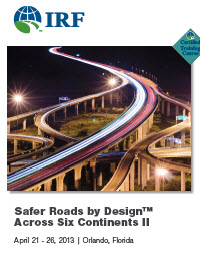
Seguridad vial a través de seis continentes
Para aquellas autoridades que hayan completado una evaluación iRAP, el seminario “Seguridad vial a través de seis continentes”, de IRF, les puede ayudar a poner en práctica los planes para salvar vidas.
El programa de capacitación Vías Más Seguras a Través del Diseño, de IRF, es reconocido como uno de los más completos del mundo, y ayuda a las autoridades viales a comprender qué pueden hacer para cumplir el compromiso de reducir muertes durante la Década de Acción para la Seguridad Vial.
El programa de capacitación se focaliza en cuatro temas principales: seguridad en las veredas (aceras), seguridad en las zonas de trabajo, seguridad del usuario vulnerable y auditorías de seguridad vial.
Para mayor información sobre el siguiente programa, que se llevará a cabo del 21 al 26 de abril de 2013 en Orlando, Estados Unidos, visite: http://www.irfnews.org/home/ o comuníquese por correo electrónico con: Mike Dreznes (mdreznes@irfnews.org).
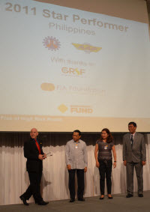
Taller de iRAP Asia Pacífico
El 5to. Taller Anual de iRAP Asia Pacífico se realizará el jueves 4 de abril de 2013 en Manila.
Como en años anteriores, el taller se llevará a cabo como parte del Seminario de Seguridad Vial en Asia, de GRSP, (2 y 3 de abril de 2013). El evento de 2012 congregó a cientos de participantes de más de 20 países.
El Taller de iRAP está dirigido a los ingenieros de caminos que laboran en las autoridades de transporte, a los formuladores de políticas, al personal de las asociaciones de automovilismo, investigadores y consultores. Los participantes tendrán la oportunidad de:
• compartir sus experiencias en la realización de evaluaciones iRAP
• aprender acerca del último modelo iRAP y desarrollos de software (http://vida.irap.org)
• conocer nuestra plataforma de capacitación en línea, RAPcapacity (http://capacity.irap.org)
• enterarse de las técnicas innovadoras para la recolección y análisis de datos
• obtener la última información sobre técnicas para la seguridad de infraestructuras.
Para mayor información, visite www.grspasia.org o envíe un mensaje electrónico a greg.smith@irap.org.
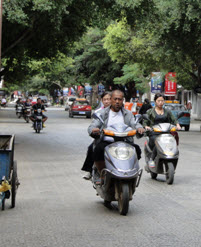
A todo vapor progresan las evaluaciones de las vías en 10 países (RS10)
Con el apoyo de GRSF y de Bloomberg Philanthropies se están encontrando oportunidades para que las vías de Brasil, China, Egipto e India sean seguras.
En Brasil, el vehículo “Ángel Naranja”’ ha llegado para que conjuntamente con el vehículo “Ángel Brasileño” puedan inspeccionar las vías.
En China, se están finalizando los resultados de las evaluaciones de dos ciudades de Yunnan y están en marcha las evaluaciones de vías rurales en Shaanxi. También se están elaborando planes para la evaluación de vías en la ciudad de Dalian.
En Egipto, el Ministro de Transporte ha respaldado los planes de evaluación de vías de alto riesgo.
En India, se dispone ahora de la línea de base de la Clasificación por Estrellas para las vías de Andhra Pradesh, Kerala, Karnataka, Gujarat, Rajasthan, Assam y Haryana, y se está evaluando el diseño de las vías con el objetivo de lograr al menos 3 estrellas para todos los usuarios de las vías.

Zonas escolares modelo en México
En México, cada día mueren más de seis niños en el camino hacia su colegio. iRAP se está asociando con Safe Kids Mexico para ayudar a crear ambientes más seguros para los niños que van caminando al colegio y vuelven a sus casas del mismo modo.
En una escuela de la ciudad de México se está realizando un proyecto piloto en respuesta a una serie de colisiones graves en las calles vecinas, que han demandado acción inmediata.
Con la University of North Carolina, iRAP está desarrollando una herramienta que permitirá que las comunidades de todo el mundo puedan evaluar las vías alrededor de las escuelas mediante la Clasificación por Estrellas, lo que generará planes de seguridad.
El proyecto cuenta con el apoyo del Fondo de Seguridad Vial.
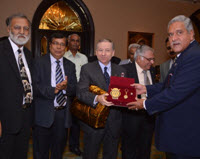
FIA promueve la seguridad vial
El Presidente de la FIA Jean Todt y el Presidente de la FIAA Nitin Dossa vieron recientemente de primera mano los esfuerzos que se han realizado para mejorar la seguridad en uno de los países más populosos.
A través de la Campaña de Acción para la Seguridad Vial y sus clubes miembro, la FIA está trabajando para ayudar a reducir las muertes en las vías de la India, donde se estima que se producen más de 200,000 muertes cada año.
Los funcionarios del gobierno de Mumbai tuvieron la oportunidad de ver el vehículo de inspección que se usa en las evaluaciones del iRAP en siete Estados, revisaron los resultados de investigaciones detalladas de muertes en las vías y consideraron evaluaciones de seguridad para vías de alta prioridad, como la carretera Mumbai-Goa que fue escenario de una horrible colisión que recientemente causó la muerte de 37 personas.
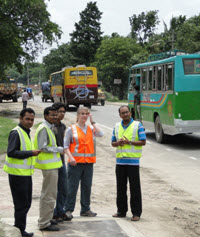
Alto a los traumatismos múltiples en Bangladesh
Como parte de los esfuerzos para frenar el número tremendamente alto de muertes y lesiones graves en las vías, el Banco Asiático de Desarrollo (ADB), el Bangladesh Roads and Highways Department (RHD) y el iRAP han evaluado las vías que representan la columna vertebral del sistema de transporte de la nación.
Las evaluaciones se hicieron como parte del primer “proyecto de seguridad vial” del ADB lo que asegurará que se adopten los programas más urgentes y rentables como parte integral de la política de seguridad vial del gobierno.
Durante el proyecto, se estimó que las muertes y lesiones graves ocurridas en los 1,300 km de vías evaluadas costaron más de US$300 millones cada año.
La mayoría de las vías evaluadas están calificadas en la banda de más alto riesgo: 1 o 2 estrellas. Las razones son claras e incluyen el hecho de que 80% de las vías que usan los peatones carecen de veredas (aceras) formales.
Sin embargo, los planes de inversión para vías más seguras preparados durante el proyecto presentan soluciones igualmente claras. La construcción de 75 km de veredas en la N4, por ejemplo, podrá prevenir más de 3,000 muertes y lesiones graves por 20 años, lo que ahorrará US$40 millones en costos debido a colisiones.
El informe técnico del proyecto está disponible para ser descargado.
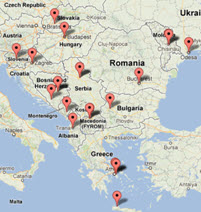
Está en marcha el proyecto Vías Seguras para las Vecindades del Sudeste (SENSOR)
El proyecto SENSOR, de dos años de duración, agrupa a 14 países y es el resultado de una excelente cooperación entre los clubes de automóviles, universidades y autoridades viales.
La mayoría de los países del Sudeste de Europa están construyendo nuevas vías o rehabilitando las existentes para obtener los beneficios de una mejor movilidad. SENSOR facilita que estos países usen las técnicas del iRAP para canalizar la inversión a fin de que puedan elevar el nivel de seguridad vial y lo puedan cuantificar.
SENSOR está cofinanciado por South East Europe (SEE) Transnational Cooperation Programme y la Unión Europea.
Estudie sobre iRAP en la Universidad de Birmingham
- Los fundamentos del enfoque del iRAP para la evaluación y mitigación de riesgos.
- Los conceptos de mapeo de riesgos y el monitoreo del desempeño.
- El concepto de clasificación por estrellas con base en los datos de inspección y diseño de las vías.
- Los principios que deben guiar el plan de inversiones para construir vías más seguras.
- Software del iRAP.

Road assessments in RS10 countries steaming ahead
With the support of the GRSF and Bloomberg Philanthropies, opportunities to help make roads in Brazil, China, Egypt and India safe are being found.
In Brazil, the ‘Orange Angel’ vehicle has arrived to join the ‘Brazilian Angel’ vehicle in surveying priority roads.
In China, assessment results for two cities in Yunnan are being finalized now and assessments of rural roads in Shaanxi are underway. Plans are also being shaped for assessments of roads in Dalian city.
In Egypt, the Minister of Transport has endorsed plans assessments of high-risk roads.
In India, baseline Star Ratings are now available for roads in Andhra Pradesh, Kerala, Karnataka, Gujarat, Rajasthan, Assam and Haryana, and road designs are also being assessed with the goal to achieve at least 3-stars for all road users.
Study iRAP at the University of Birmingham
The University of Birmingham is now offering a hands-on iRAP course for road safety engineers, managers, and other road sector professionals.
The first course, delivered in collaboration with iRAP, includes practical exercises, discussions and exposure to the iRAP software. The course will be delivered over five days (2-6 September 2013) in state-of-the-art teaching and learning facilities.
By the end of the course, the participants are expected to have acquired an understanding of the following:
- The fundamentals of the iRAP approach to risk assessment and mitigation.
- The concepts of risk mapping and performance tracking.
- The concept of star rating based on inspection data and road designs.
- The principles of developing a safer roads investment plan.
- The iRAP software.
To enrol in the course, visit: http://www.birmingham.ac.uk/students/courses/cpd/civil-engineering/irap.aspx#CourseOverviewTab.
Award-winning efforts in Latin America
iRAP was recognised for its contributions to road safety at the annual FIA Region IV American Awards.
iRAP Regional Director, Julio Urzua, was recognised by FIA for his work on the creation and implementation of road safety initiatives for 2012, reaffirming motoring clubs commitments in strengthening the synergy between mobility and motorsport.
By the end of 2012, iRAP assessments had been undertaken in Argentina, Belize, Brazil, Chile, Colombia, Costa Rica, El Salvador, Guatemala, Honduras, Mexico, Nicaragua, Panama and Paraguay.

Halting multiple traumas in Bangladesh
As part of efforts to curb tremendously high numbers of road deaths and serious injuries, the Asian Development Bank (ADB), Bangladesh Roads and Highways Department (RHD) and iRAP have assessed roads that form the backbone of nation’s transport system.
The assessments occurred as part of the ADB’s first ‘road safety pipeline project’, which will ensure that the most urgent and cost-effective road safety programs are adopted as an integral part of the road safety policy of the Government.
During the project, it was estimated that deaths and serious injuries on the 1,300km of roads assessed cost more than US$300 million each year.
The majority of roads assessed are rated in the highest risk bands: 1- or 2-stars. The reasons for this are clear and include the fact that 80% of the roads where pedestrians are likely to use the road have no formal footpaths.
However, Safer Roads Investment Plans prepared in the project make the solutions equally clear. Construction of some 75km of footpaths on N4, for instance, could prevent more than 3,000 deaths and serious injuries over 20 years and save US$40 million in crash costs.
The project technical report is available for download.

South East Neighbourhood Safe Routes (SENSOR) project underway
The two-year SENSOR project brings together 14 countries and builds on outstanding cooperation between automobile clubs, universities and road authorities.
Most countries in South East Europe are constructing new roads or rehabilitating existing roads to achieve mobility benefits. SENSOR enables these countries to use iRAP techniques to target investment so that they can raise the overall level of safety performance of routes in a measurable way.
SENSOR is co-financed by the South East Europe (SEE) Transnational Cooperation Programme and the European Union.

Road safety across six continents
For any road authority that has completed an iRAP assessment, the IRF’s “Road Safety Across Six Continents Seminar” can help put life-saving plans into practice.
The IRF’s Safer Roads by Design training program is among the most comprehensive in the world, and helps road authorities understand what can be done to meet their commitment to reduce deaths during the Decade of Action for Road Safety.
The training program focuses on four main topics: Roadside Safety, Work Zone Safety, Vulnerable User Safety, and Road Safety Audits.
For more information on the next program, to be held on April 21-26, 2013 in Orlando, USA, visit: http://www.irfnews.org/home/ or email: Mike Dreznes (mdreznes@irfnews.org).
2013 iRAP Technical report – ADB Road Safety Program: Bangladesh
Download Click the file icon above to download the file. 2013 iRAP Technical report – ADB Road Safety Program: Bangladesh
Model School Zones in Mexico
Each day, more than six children die on their way to school in Mexico. iRAP is partnering with Safe Kids Mexico to help create safe environments for children to walk to and from school.
A pilot project is now being undertaken at a school in Mexico City, where a series of serious crashes in neighbouring streets have prompted calls for action.
Working with the University of North Carolina, iRAP is developing a tool that will eventually enable communities around the world to Star Rate roads around their schools and generate safety countermeasure plans.
The project is being supported by the Road Safety Fund.

FIA promoting road safety
FIA President Jean Todt and FIAA President Nitin Dossa recently saw first-hand efforts being made to improve safety in one of the world’s most populous countries.
Through the Action for Road Safety Campaign and its member clubs, FIA is working to help to reduce the road deaths in India, estimated to exceed 200,000 each year.
Government officials in Mumbai had the opportunity to view the survey vehicle used in iRAP assessments across seven States, review detailed road death investigation results and consider safety assessments for high-priority roads such as the Mumbai-Goa Highway which was the scene of a horrific crash that recently claimed 37 lives.
